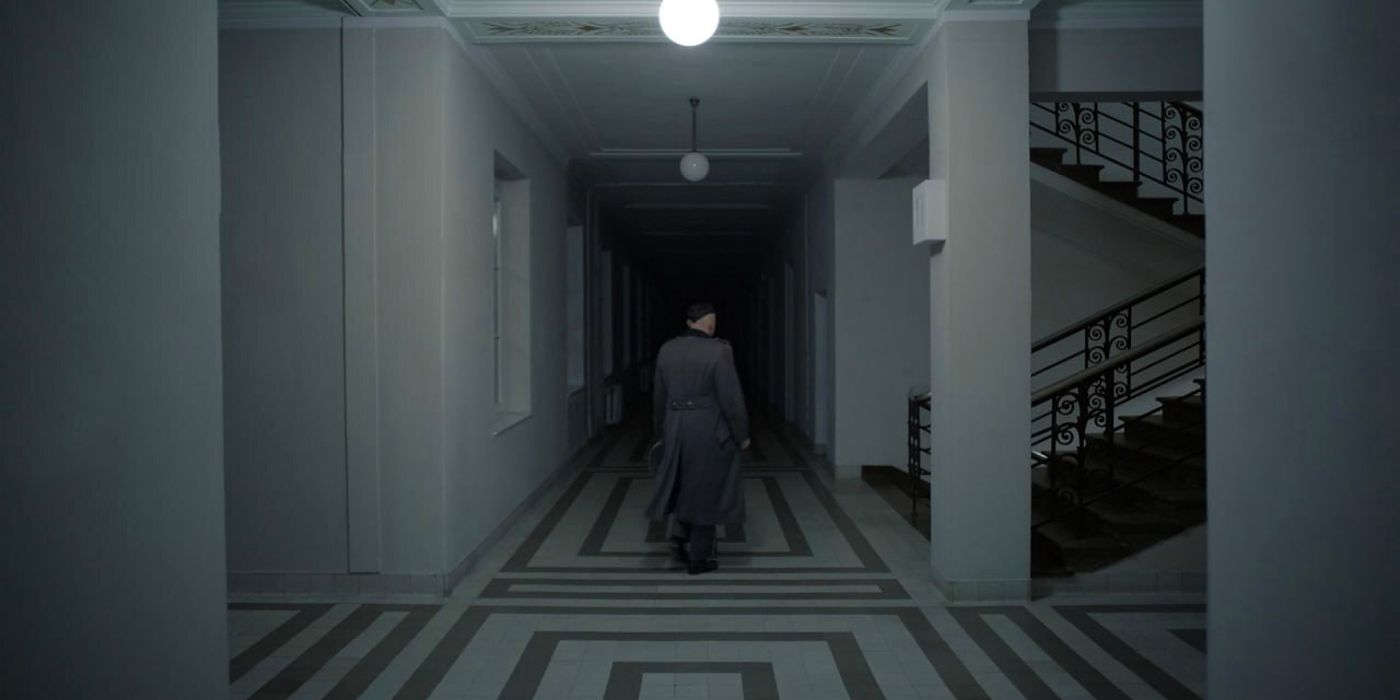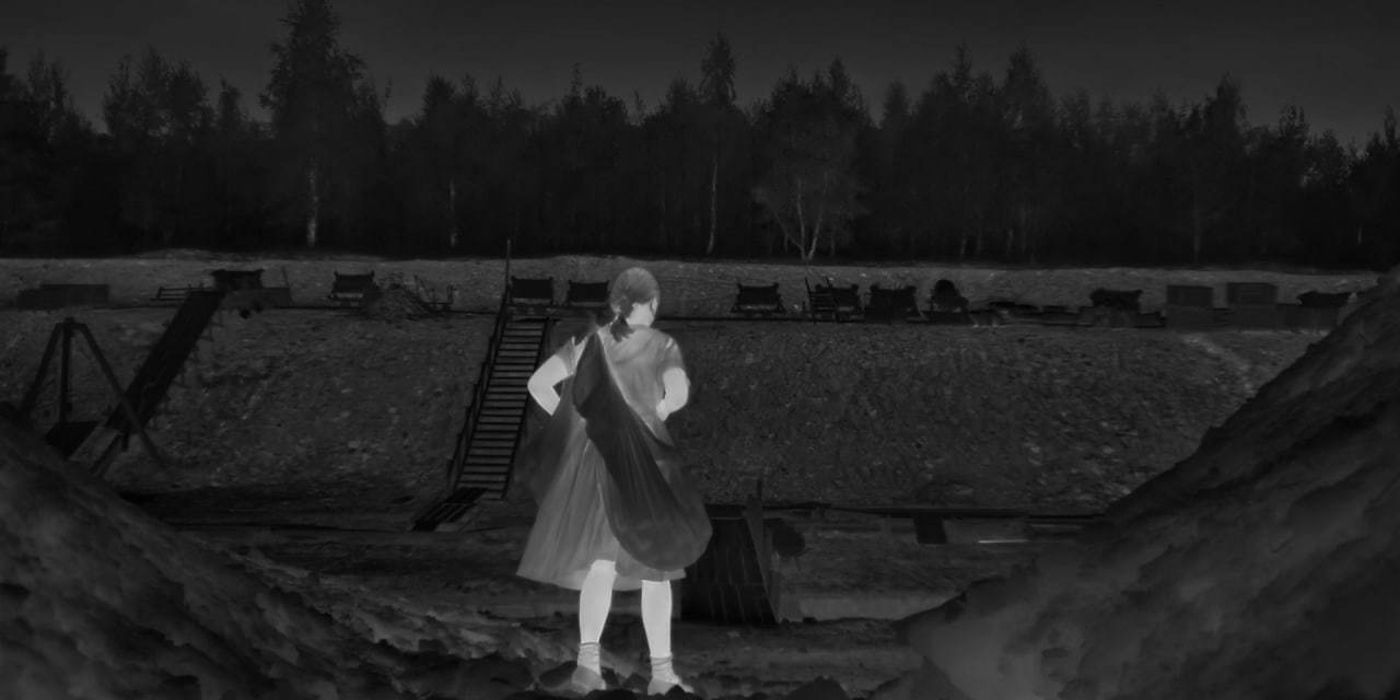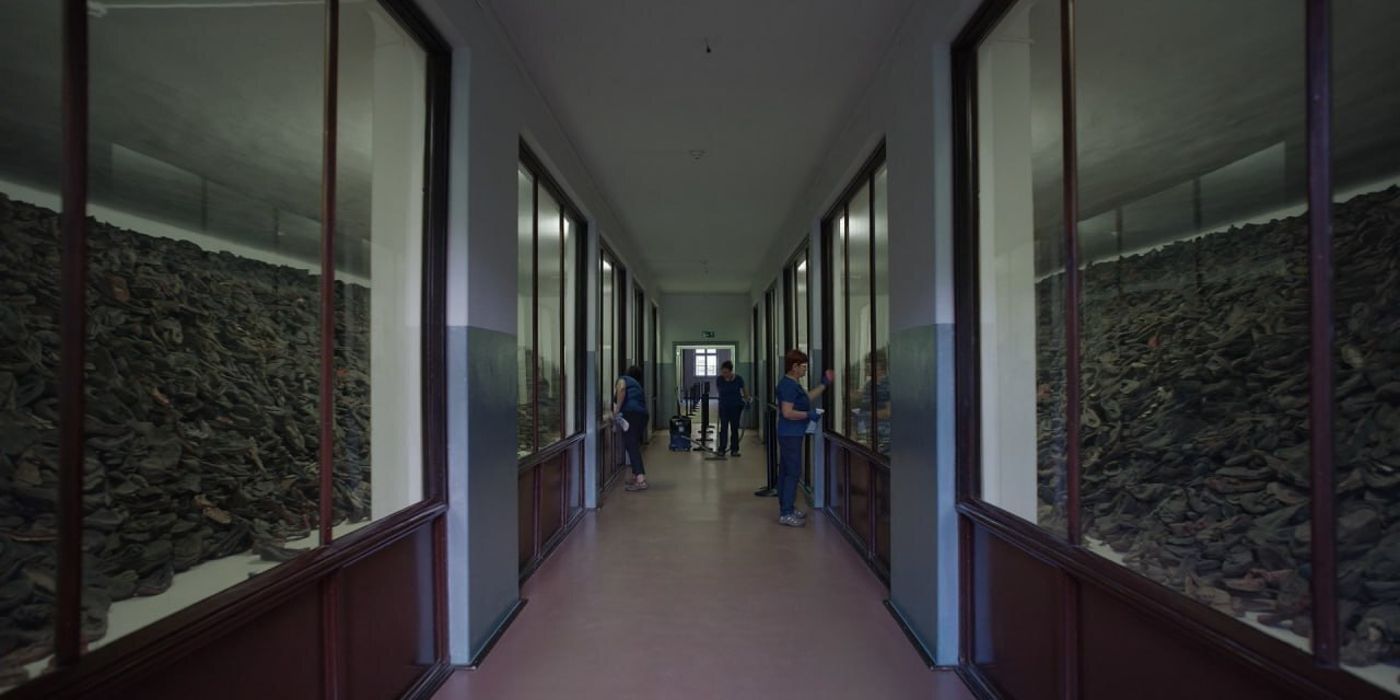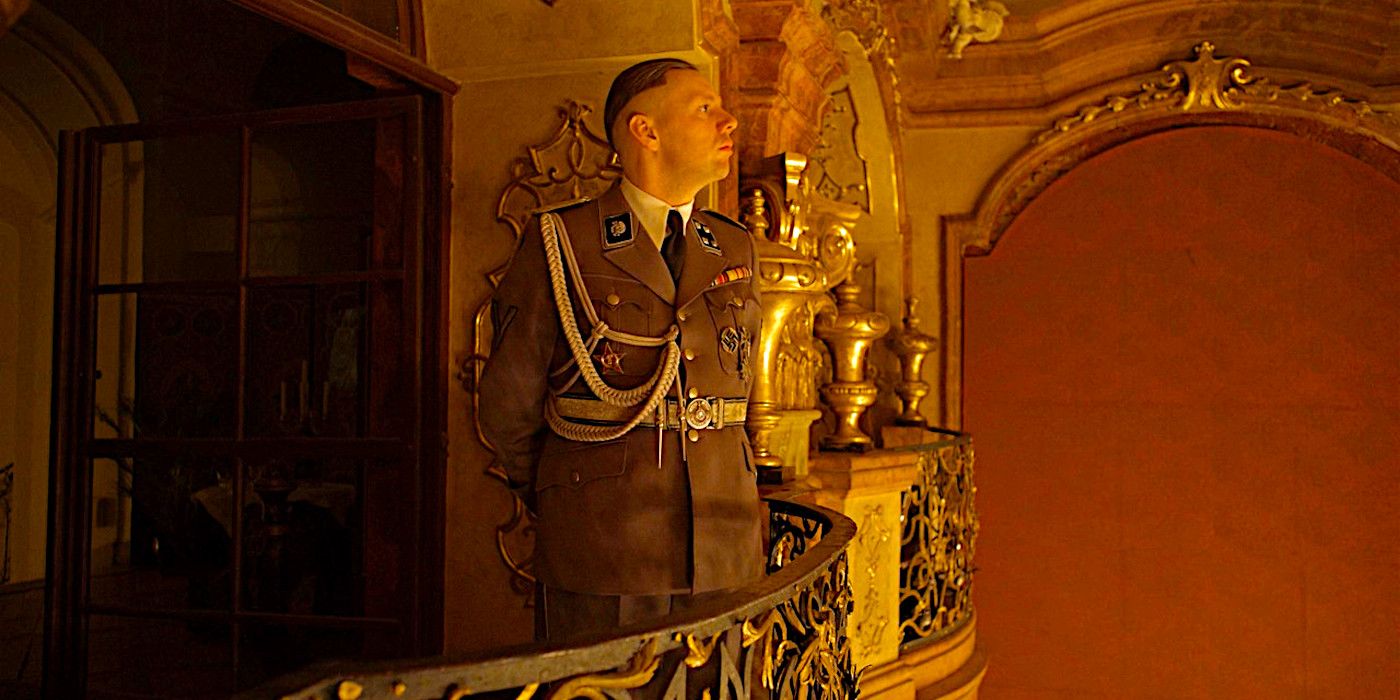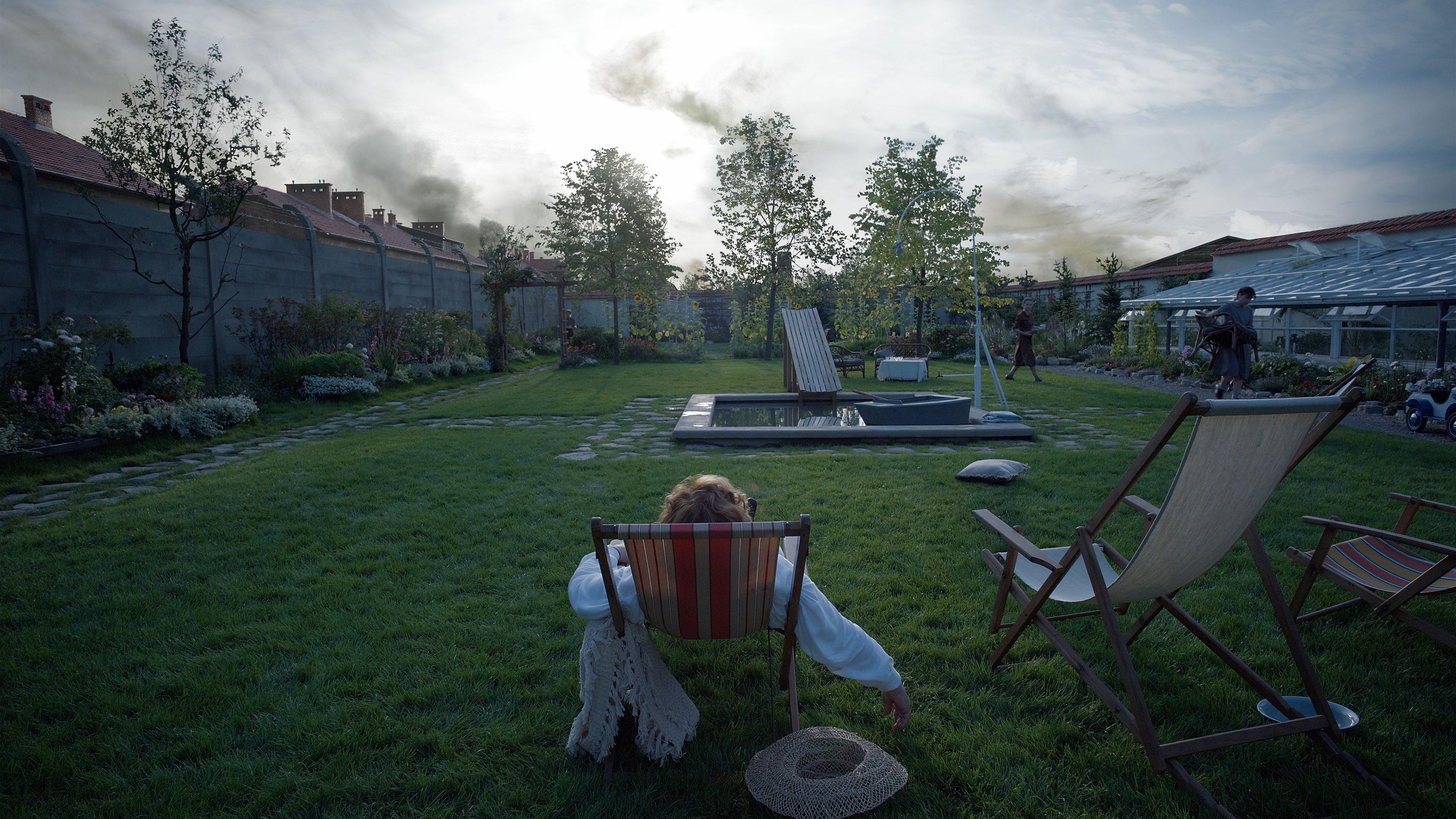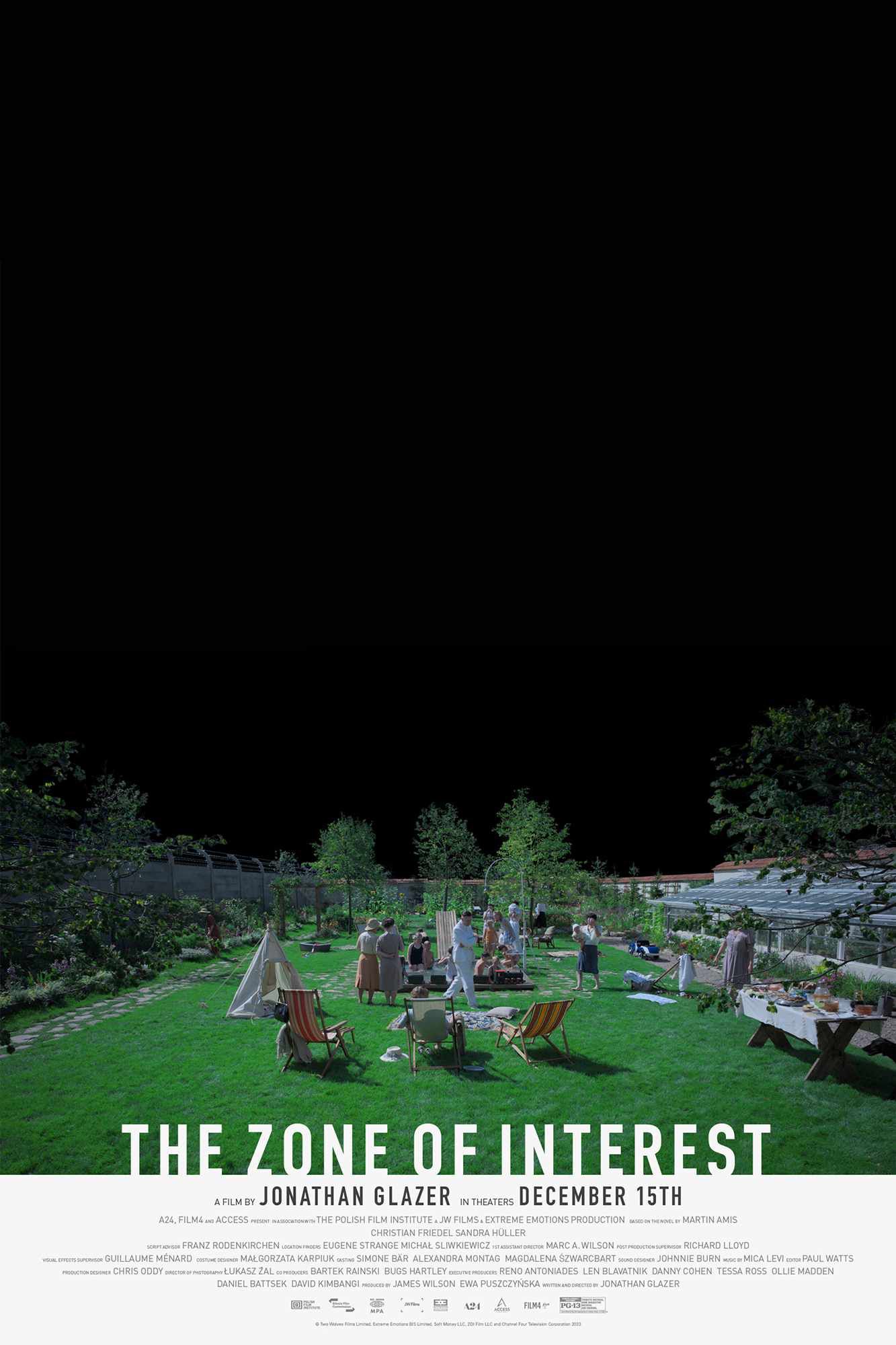Summary
-
The Zone of Interest
offers a chilling and contemplative exploration of the banality of evil and horror in Auschwitz during World War II. - The film’s abstract and innovative approach, combined with its dire subject matter, creates a thought-provoking and haunting experience.
- The ending of
The Zone of Interes
t delves deep into the vileness of the main character, Rudolf, while displaying the failure of the Nazi Party to eradicate the Jewish people.
The Zone of Interest ending offers a haunting conclusion to the chilling and contemplative Jonathan Glazer film. Glazer is known for his other highly original concept films such as 2013’s Under the Skin starring Scarlett Johansson and for directing several Radiohead music videos including “Karma Police”. Glazer earned his first two Oscar nominations at the 2024 Academy Awards for The Zone of Interest, one for Best Director and the other for Best Adapted Screenplay, although his film is quite different from the 2014 novel of the same name written by Martin Amis.
The Zone of Interest begins and ends with a black screen accompanied by atmospheric orchestral music that resembles the unsettling sounds of machinery and suffering. The film is thoughtfully abstract and artistically innovative given its dire subject matter. The Zone of Interest presents a series of evoking scenarios with direct contradictions between an idyllic home life adjacent to the horrific realities of Auschwitz, the most notorious of the German concentration camps during World War II. The film offers an unprecedented lens on the banality of evil and horror pertaining to Auschwitz and those responsible for its construction and implementation.
Related
Is The Zone Of Interest Based On A True Story?
The Zone of Interest is one of the most talked-about movies of 2023, causing many viewers to wonder if the film is based on a true story.
What Happens In The Zone Of Interest’s Ending
Höss Returns To Auschwitz
The ending of The Zone of Interest starts to unfold when decorated Nazi and S.S. Member Rudolf Höss (Christian Friedel) is given an assignment that will bring him back to Auschwitz, where he had initially been a commander. This makes his wife Hedwig (Sandra Hüller) excited, who had demanded that she and Rudolf’s five children continue to live in their idyllic home which shares a wall with the concentration camp. Höss is set to return to Auschwitz and continue development plans for gas chambers to be implemented for the hundreds of thousands of Hungarian Jews that are being sent there.
Höss attends a party held by the Nazis in Berlin to celebrate the Hungarian operation but reveals to Hedwig over the phone that all he could think about was how to gas everyone in the room. On what is apparently his last night in Berlin, Höss walks down a series of stairs after the party and begins to retch uncontrollably, but he does not vomit. He looks down the dark hallway and the film jumps ahead in time to the present day, showing a cleaning service vacuuming the floors and cleaning the glass at the Auschwitz-Birkenau State Museum. The film jumps back to Höss, who descends the stairs into darkness.
Why Rudolf Höss Was Dry Heaving In The Zone Of Interest
Höss Was Suffering From Health Issues And Self-Disgust
Höss is likely dry-heaving at the end of The Zone of Interest for two ostensible reasons. The first reason is that he has likely developed some type of health issue from living just outside Auschwitz, which is why he was seen by a doctor in Berlin during his time away. The smoke and soot from Auschwitz seem to have contaminated the air and water outside his family’s home, which could indicate they could face healthier issues themselves down the road.
This suggests he has seen the truth of what he’s doing and, for the briefest of moments, it makes him want to vomit.
Secondly, Höss’ retching is a metaphor for the vileness of his nature, and potentially any ounce of humanity still within him that is repulsed by his heinous crimes. This suggests he has seen the truth of what he’s doing and, for the briefest of moments, it makes him want to vomit. This idea was supported by actor Christian Friedel in an interview with The Film Stage, saying:
“I think it’s a fight: body against his soul. Because the body tells the truth and our mind, we can betray ourselves. We are masters of self-deception.”
Such an idea does fit, although it should be noted the movie makes absolutely no attempt to make the character actually be remorseful. The idea is that the body may feel this way, but it’s rejecting the mind; in turn, Höss, by retching but not vomiting, is rejecting his body and insisting his mind is correct. He is in no way swayed against the horrors he must carry out, nor is there a suggestion he sees them as horrors. This is important to ensure there is no shred of salvation.
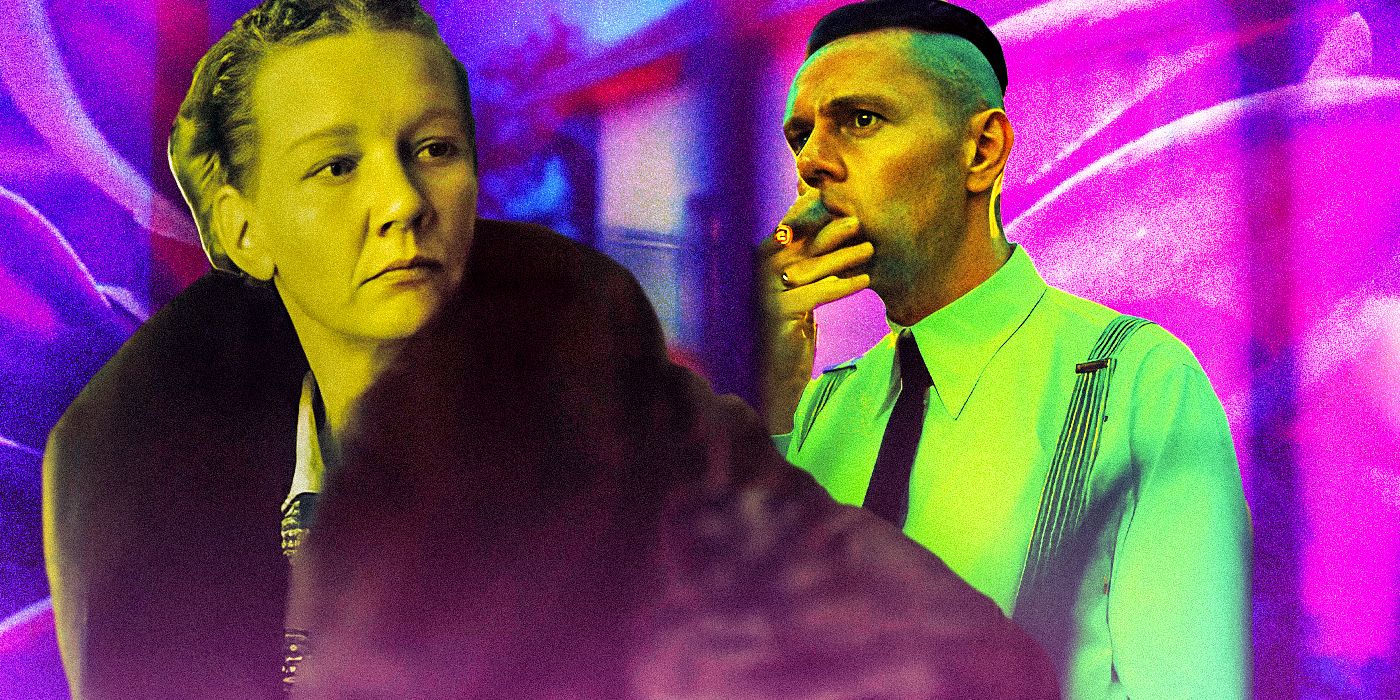
Related
Where To Watch The Zone Of Interest: Showtimes & Streaming Status
The Zone of Interest is one of the most talked-about films of 2023, and in the wake of it getting nominated at the Oscars, here’s how to watch it.
Why Hedwig’s Mother Left Auschwitz So Quickly In The Zone Of Interest
She Could Not Take The Noise And Smoke
Hedwig wakes up one morning to discover that her mother, who had been visiting her Auschwitz home for quite some time, suddenly left with all of her belongings in the middle of the night. Hedwig is furious, especially since she has become lonely and uninspired in Höss’ absence.
Throughout The Zone of Interest, Hedwig’s mother is supportive of her “dream home” and dementedly proud of her so-called accomplishments, but is kept up at night by the horrors going on next door. This forces Hedwig’s mother to leave in the middle of the night unannounced, unable to bear the screams and the smoke from over the wall. However, Glazer explained Hedwig’s mother leaving in The Zone of Interest, insisting it was not about her conscience:
“It’s just the proximity. It’s no different, to someone like her, to buying your steak at Sainsbury’s and going to an abattoir. You know where that steak comes from, but you don’t really want to be around a cow being slaughtered or the smell of it, or have the blood running over your shoes . . . there’s no pang of conscience, no redemption. There’s no salvation in this film, and there can’t be. These characters end the way they start.
Who Was The Girl Putting Fruit Out At Night?
The Mysterious Figure Was Based On A Real Person
The Zone of Interest depicts a teenage girl placing apples and pears in the trenches and paths leading to Auschwitz, which were intended for the Jewish captives that the Nazis were transporting. The film interestingly portrays this through a thermal lens as the girl shines brightly in an otherwise dark environment.
Glazer explained the girl leaving food out in The Zone of Interest was based on a real person: a woman named Alexandria, who would leave apples at the concentration camp.
The girl is a Polish local who lives near the camp and takes her bike out each night to stage the fruit for the prisoners. It’s implied that she and her family are also Jewish and hide in their homes to avoid detection from the S.S. officers with the flames of Auschwitz so nearby. Glazer explained the girl leaving food out in The Zone of Interest was based on a real person: a woman named Alexandria, who would leave apples at the concentration camp. He added:
“She lived in the house we shot in. It was her bike we used, and the dress the actor wears was her dress. Sadly, she died a few weeks after we spoke.
“That small act of resistance, the simple, almost holy act of leaving food, is crucial because it is the one point of light. I really thought I couldn’t make the film at that point. I kept ringing my producer, Jim, and saying: ‘I’m getting out. I can’t do this. It’s just too dark.’ It felt impossible to just show the utter darkness, so I was looking for the light somewhere and I found it in her. She is the force for good.”
The Significance Of The Present Day Museum Scene Explained
One Key Moment Highlights That The Nazi Party Failed In Their Evil Goals
The Zone of Interest jumps ahead to display some of the original preserved artifacts in the modern-day Auschwitz-Birkenau State Museum. Höss looks down a dark hallway, which represents the dark path he has played a large part in creating for humanity. At the other end of the timeline is the museum, which is held to honor the Holocaust victims and refute the violence of the Nazis, who are convinced of their view of the future world. The museum scene holds space in The Zone of Interest as an emblem of the Nazi Party’s failure to eradicate the Jewish people from human history.
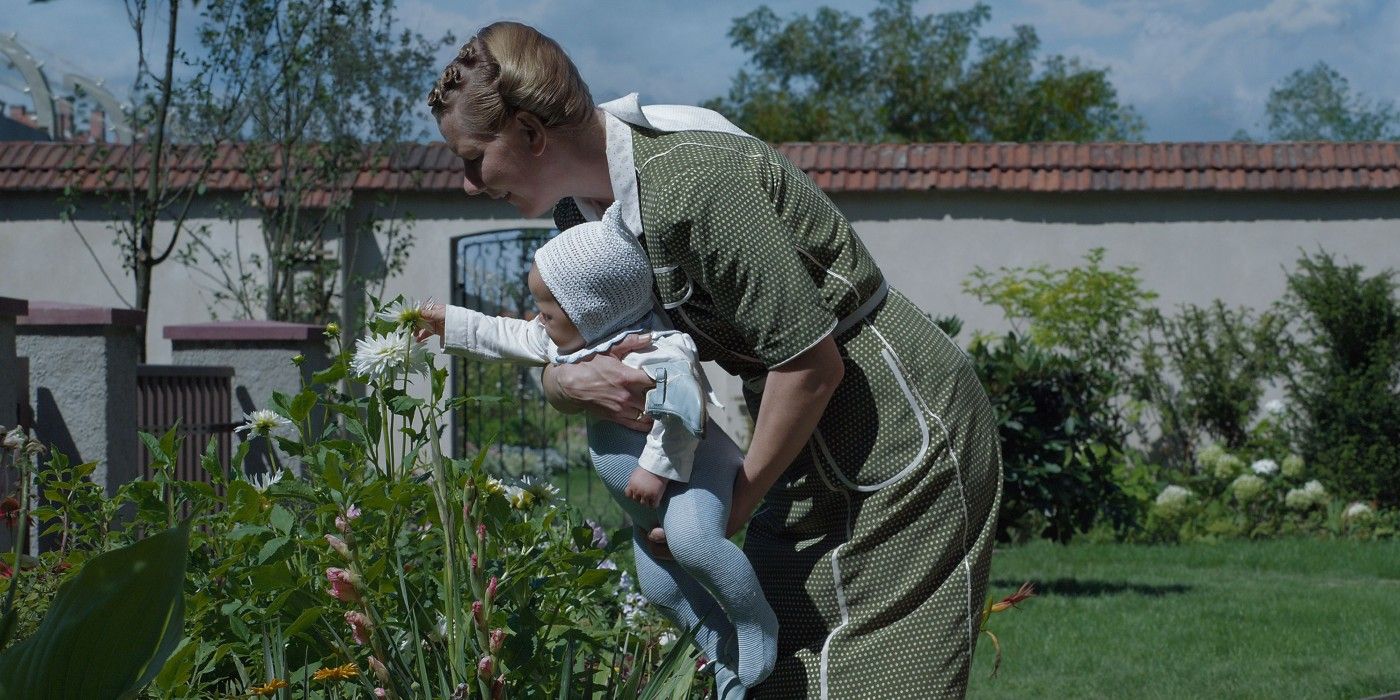
Related
The Zone Of Interest Review: World War II Drama Is A Startling Masterpiece & One Of 2023’s Best Films
The Zone of Interest is an exacting masterpiece that settles into a domestic rhythm that is horrifying in its gestures at normalcy.
The Real Meaning Of The Zone Of Interest’s Ending
The Movie Is An Exploration Of The Blurred Lines Between Humanity And Inhumanity
The Zone of Interest brilliantly depicts the ongoing mundane interests and selfish considerations of the Höss family backdropped by the horrors that act as the foundation for their so-called idyllic reality. It presents Höss and the Nazis as the monstrous executioners of an evil fascist ideology while strangely humanizing him by remaining solely focused on the family and home life throughout.
A call home from a husband to his wife telling her he’s coming home from a business trip, their excitement over his promotion, the pool party among a garden of flowers: all accessible, desired, and human things undermined by the horrific environmental and historical contexts.
The lingering effect of viewing Glazer’s film is nearly as inescapable as the screams and the smoke in the Höss household, and that’s exactly the point.
The Zone of Interest excels in demonstrating these seemingly everyday occurrences within the context of the Nazi objectives. The lingering effect of viewing Glazer’s film is nearly as inescapable as the screams and the smoke in the Höss household, and that’s exactly the point.
The haunting impression of The Zone of Interest reinforces the lack of human elements in the film itself, in which so many of the characters are inhumane monsters. Rudolf and Hedwig were able to block out the realities of Auschwitz for the sake of their personal well-being, which represents the Nazi’s dehumanization during the Holocaust at large.
How The Zone Of Interest Novel Ends
The Book And Movie Are Vastly Different
The Zone of Interest is loosely based on the 2014 novel of the same name by Martin Amis. However, the book and the novel are incredibly different, both structurally and in terms of their focus. Amis’ version of The Zone of Interest doesn’t focus on the real-life figure Rudolf Höss but instead is structurally divided into the first-person perspective of three fictional characters — Nazi officer Angelus Thomsen, Auschwitz Commandant Paul Doll, and Jewish Sonderkommando named Shmulz. Each character has a different perspective on the atrocities taking place, and it’s mainly the psychological themes this unique structural take presents that the The Zone Of Interest movie takes from its source material.
Ultimately, the novel of
The Zone of Interest
is a different story to the movie, but both have similar themes running throughout.
Director Paul Glazer’s adaptation of The Zone of Interest was celebrated for many reasons, among them that it made the interesting decision to never show what was happening inside the camp itself. This is a huge deviation from the book, which spends a lot of time behind the gates of Auschwitz, especially in the sections narrated by Schmulz. As one of the Sonderkommando, Schmulz was a prisoner himself and tasked with the harrowing job of disposing of bodies from the Gas Chambers.
As for the characters, the The Zone of Interest movie merges Angelus Thomsen and Paul Doll from the novel, fusing various aspects of their story and giving the “new” character the identity of Rudolf Höss, who was a real SS Commandant in charge of the infamous Concentration Camp. The end of the novel The Zone of Interest takes place in 1948, with Thomsen tracking down Paul Doll’s wife, Hannah (who Hedwig was based on), who he was smitten with. Much to his dismay, Hannah informs him she could never spend time with him as he served as a reminder of everything that she was adjacent to while living next to Auschwitz.
Ultimately, the novel of The Zone of Interest is a different story to the movie, but both have similar themes running throughout. They are both focused on the psychological impact of Auschwitz, though the movie purely focuses on those who carried out the atrocities rather than those that they were inflicted on. Where they are both similar is in their attempt to capture the disillusionment and self-deception of Nazi Party members and the measures they’d take to ignore the immensely inhuman acts they were, directly or indirectly, enabling.


